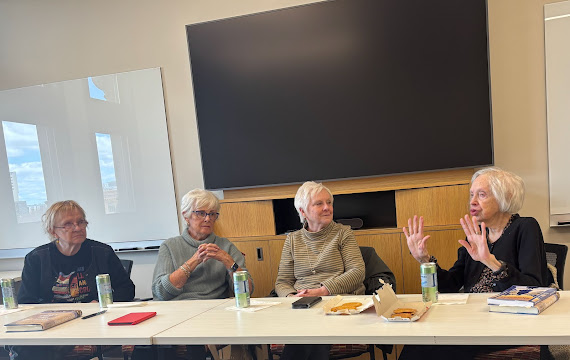So Much to Discuss, So Little Time
Insights and Opinions
First, a brief description from the publisher: "Sybil Van Antwerp has throughout her life used letters to make sense of the world and her place in it. Most mornings, around half past ten, Sybil sits down to write letters -- to her brother, to her best friend, to the president of the university who will not allow her to audit a class she desperately wants to take, to Joan Didion and Larry McMurtry to tell them what she thinks of their latest books, and to one person to whom she writes often yet never sends the letter.
"Sybil expects her world to go on as it always has—a mother, grandmother, wife, divorcee, distinguished lawyer, she has lived a very full life. But when letters from someone in her past force her to examine one of the most painful periods of her life, she realizes that the letter she has been writing over the years needs to be read and that she cannot move forward until she finds it in her heart to offer forgiveness."
Insights and Opinions
+ We started discussion of The Correspondent by being annoyed with Audible's categorization of this title as "Best of epistolary, women's fiction, tear-jerking." Is it "women's fiction" because it's about a woman? Because it's written by a woman? Is it "tear-jerking" because it touches on emotional topics? Good lord. But then one of our number pointed out that roughly 85% of fiction these days is read by women. So, then we decided that ALL fiction is women's fiction and should just be categorized as fiction.
+ Linda read the first half of the book and then listened to the second half on Audible. She noted that the actress reading the part of Sybil in the Audible version presented her as a nastier version than appears on the page. This brings to mind Kurt Vonnegut's statement that literature is the only art in which the audience plays the score. The writer puts the words on the paper but the reader brings them to life. Audible users be warned. You may have a different reaction to the work depending on whether you read it quietly in your chair or someone delivers their interpretation to you rather than your own.
+ The story is told entirely in letters, which is an interesting method. Doing so allows time to elapse without the reader experiencing everything that's happened in the interim. To Shirley, this was an extremely difficult feat on the author's part. In some ways, the story is told and retold, and Evans handles it deftly. Liz felt this letter-writing was an important window into the central character -- a way inside. Per Chris: "Through the letters, you meet the characters in ways you don't normally. You feel like you are sitting right there with her while she writes."
+ Sybil is a fascinating character who could definitely come off as strident and unpleasant if we weren't inside her head. Her habits with young Harry, a teenager who's possibly autistic, can seem bossy, yet she is clearly an experienced mentor who is unafraid to call it the way she sees it.
+ As Sybil begins to receive poison pen letters from someone whose life she's clearly touched in a hard way, she begins to show us why the letters are no surprise. "The fact that she was in her own grief and turned her meanness onto someone else was both surprising and believable," Jocey said. This series of events makes clear how important it is not to make assumptions about what may be happening in someone else's life.
+ The resolution of the poison pen letters struck some as a bit too neat. Both Margy and Chris agreed that life doesn't resolve that neatly.
+ Linda expected more conflict between Sybil and her daughter about her projected move. Because she expresses her revulsion at being "put away" so early in the text, perhaps there should have been more to come on that specific topic.
+ Sybil's reasons for writing letters, with a pen and a piece of paper, make one stop and think. "Imagine the letters one has sent out into the world, the letters received back in turn, are like the pieces of a magnificent puzzle, or, a better metaphor, if dated, the links of a long chain, and even if those links are never put back together, which they will certainly never be, even if they remain for the rest of time dispersed across the earth like the fragile blown seeds of a dying dandelion, isn't there something wonderful in that, to think that a story of one's life is preserved in some way, that this very letter may one day mean something, even if it is a very small thing, to someone?
Our Next Read
Earlier, we had decided to read The Bee Sting for our next meeting, but we've changed our minds. Instead, details for our November meeting are:
Title: The Wedding People, by Alison Espach
Location: Chris' new digs

The author with original copy of Canoe Country by Frances Page Jaques.
 |
| A Boundary Waters tableau |
 |
| Happy campers. |
 |
| North woods classics: soon to be a novel? |








.jpeg)












